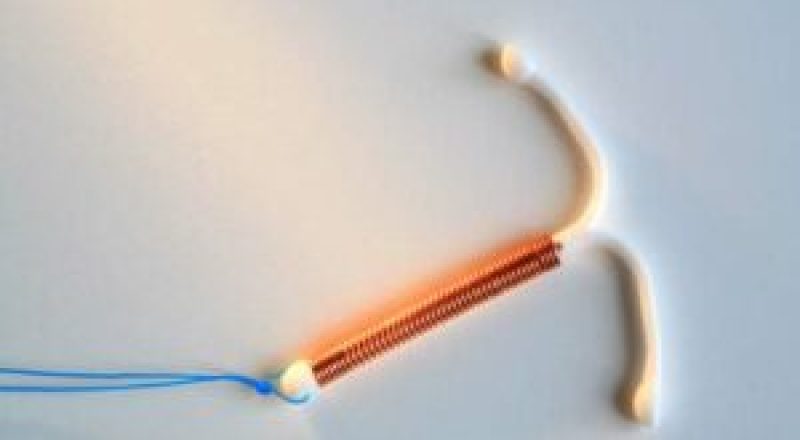What is a copper IUD or intrauterine device?
It’s a medical device which is more commonly known as a “copper IUD”1.
Not to be confused with the hormonal IUD, which is also an intrauterine contraceptive but which acts via the local diffusion of a hormone, and whose mechanism of action is different.. It does not follow the same rules of use.
The copper IUD is placed, as the name suggests, in the uterine cavity. It measures about 3 cm and is usually made of plastic and copper.
It is a non-hormonal contraception, referred to as “mechanical,” which respects your natural hormonal cycle. It is considered a long-acting contraceptive, meaning it can remain in place for between 4 and 10 years1-3, reducing your daily mental burden. Of course, a copper IUD can be removed at any time if you wish.
It is considered a “very effective” contraceptive method by the World Health Organization with few side effects4.
Qui peut avoir un stérilet au cuivre ?
ALL women (or menstruating individuals) of childbearing age, including adolescents, and women who have never had children 1-3,5. This contraception can also be used after childbirth or termination of pregnancy, whether the woman is breastfeeding or not.
Where and by whom can I get a copper IUD inserted?
The insertion of a copper IUD is usually done after two visits by a medical doctor or a midwife :
During the first visit, you express your needs and preferences regarding contraception. Depending on the circumstances, a gynecological examination and tests for sexually transmitted infections may be performed 3,5.
If you are prescribed a copper IUD, it will be available at a pharmacy (sometimes with an order lead time of just a few days).
The insertion of a copper IUD can be done at any time. The date of insertion is scheduled with your healthcare provider according to your menstrual cycle, obstetric, and gynecological history.
Is it painful?
The insertion is usually not very painful for the majority of women. The main cause of discomfort is the contact with the cervix. This discomfort is felt during the insertion of the speculum or when the cervix is grasped with the cervical tenaculum. The contact of the uterine fundus with the hysteroscope* or the IUD inserter can also cause an unpleasant sensation.
The pain during insertion can be reduced by prescribing painkillers and using other pain management techniques (relaxation, sophrology, hypnosis, etc.).
The technique of insertion itself can minimize your discomfort. Some healthcare providers do not perform hysteroscopy and/or do not use forceps for cervical traction : Your anatomy, the expertise of your healthcare professional, or the type of inserter used may sometimes allow this.
Did you know?
The copper IUD can be used as emergency contraception up to 5 days after unprotected sexual intercourse 3,5.
*A hysteroscope is a flexible rod of small diameter used to measure the size of the uterine cavity.
Sources :
1. HAS. Méthodes contraceptives: Focus sur les méthodes les plus efficaces disponibles. 2017. https:// www.has-sante.fr/jcms/c_1369314/ fr/methodes-contraceptives-focussur-les-methodes-les-plus efficacesdisponibles. Site consulté le 30 juin 2022.
2. CNGOF. Fiche d’information des patients « Dispositif intra-utérin (stérilet)» datée de 2017. http://www.cngof.fr/ fiches-patientes . Site consulté le 30 juin 2022
3. Vidal F, et al. Contraception intrautérine. RPC Contraception CNGOF. Gynécologie Obstétrique Fertilité & Sénologie. 2018. https://doi.org/10.1016/j.gofs.2018.10.004
4. Organisation Mondiale de la Santé : Contraception d’Urgence https://www.who.int/fr/news-room/fact-sheets/detail/emergency-contraception
5. L’assurance Maladie. La contraception par stérilet ou dispositif intra-utérin (DIU). https://www.ameli.fr/assure/sante/ themes/contraception/contraceptionsterilet. Site consulté le 30 juin 2022.

